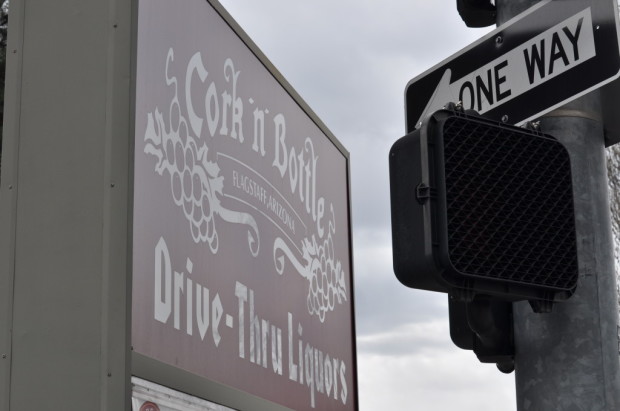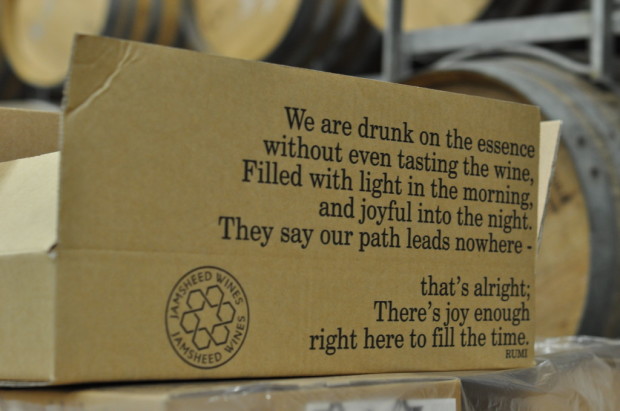Tasting Goodland Wines
2011 Goodland Wines pre-bottling
“Goodland Wines is our thesis on Santa Barbara County.”
Considering History: Santa Barbara County Wine
At the end of the 1960s, the rolling hills of Santa Ynez in Santa Barbara County fed their golden grasses to cattle, the region largely focused on grazing and wide open spaces. Having graduated from UC Berkeley in 1965, Richard Sanford had a hunch that the cool climate of Santa Rosa Road, approaching the ocean, would serve grape vines. In 1970, along with Michael Benedict, he planted about a remote curve of Santa Rosa Road to establish what is now the oldest vineyard in the Santa Ynez AVA, an experiment that now gives insight to a still young wine valley. Pinot Noir and Chardonnay from that planting still give fruit.
To the North, three years later two brothers moved into Santa Maria putting a mix of vines that would become some of the oldest plantings of Chardonnay for the region, also still producing fruit. Together these vineyards marked the start of a new turn for the area, a focus on wine that has helped reshape a still ranching focused County.
In the initial decades of planting vines through Santa Barbara County, the region was a wild experiment. Sanford & Benedict stands out as one example that hit the experiment right early, while others in the County placed Cabernet next to Pinot to see which would handle the climate and soils best, then tore out vines. It was a new region with little wine growing history to rely upon.
Forty years later, Santa Barbara County has reached what some describe as its second wave. Enough history holds to show insight into the regions’ best expressions in wine. Sta Rita Hills have proven apt for Chardonnay. Happy Canyon gives vibrant Sauvignon Blanc, as examples.
Enter Goodland Wines.
A Thesis on the Region: Goodland Wines
Together Matt Dees, Dave Potter, Chris Snowden, and Ruben Solorzano, each well established in the wine industry in varying ways, would revel in a philosophical debate–what is the best wine expression of Santa Barbara’s various AVAs?
What is unique about Santa Barbara County is its varied climate within a very small area. At the coast, in the Sta Rita Hills, for example, the weather remains relatively cool throughout the day, with fog hovering close to ground and winds prevailing. Here Burgundy varieties and cool climate Syrah have been planted. Mere miles inland, the heat spikes enough that Bordeaux varieties show well in Happy Canyon, the hottest area in the County, also carrying the biggest diurnal shift with still cool nights. A touch between the two, a small bowl in the mountains, named Ballard Canyon, has proven well for Rhone reds.
As Dees describes, the variation within such close proximity makes the region exciting to work with as a winemaker. The current moment in the region’s development makes it exciting again. Still, the wine industry here is young enough that what grapes grow best where is still, to some degree, at play. As Dees explains, this point in history with the County’s unique conditions “gives us the chance to think about what we see here. That’s the joy of it.”
The four friends, then, decided to put their debate in the glass, so to speak, and establish what is a sort of thesis of Santa Barbara County wine–wines to express each AVA. In doing so, they also draw on the French model–labels that showcase the AVA first. As Dees explains, such a focus is not about a winemaker, but about what the appellation has to offer. “It’s the vineyard that matters.”
Knowing the Vineyards: Ruben Solorzano
from left: Matt Dees, Chris Snowden, Ruben Solorzano (Dave Potter to the right of frame wrestling bear)
In talking to the group, Matt Dees and Chris Snowden both readily turn the focus to their friend Ruben Solorzano. The Goodland Wines project began as inspiration from the four of them together, but Dees and Snowden emphasize the important role Solorzano has played.
Solorzano has worked with vineyards throughout the County since the mid-1980s. In the region people call him “The Vine Whisper,” a title he laughs about but listening to him speak I begin to recognize why.
The four of us are standing next to Syrah planted through a limestone band in Ballard Canyon. It’s a vineyard that Solorzano knows well. I ask him to talk through how he works with the site. He walks up to the vine and touches his fingers to one of its arms. “The difficult thing about growing grapes,” he tells me, “is that there is no book you can follow. Every year you can learn, accumulate experience, but you have to start again every year.”
Dees compliments Solorzano’s intuition and knowledge of each of the vineyards the group works with. Solorzano responds that he’s been lucky to learn with lots of people, in lots of vineyards and get to know the area. Then he goes back to explain his work again. During the hardest part of the summer he visits each vineyard 3 or 4 times at different parts of the day. Each visit he simply walks up to the vines and touches them.
As he explains I feel my body slow down with his. “I walk through and touch the leaves, and touch the vines,” he says. He goes on to describe how he tries to imagine his way into what the vine is doing and what the vine needs. This is how he decides the best way to respond. “Somehow I just get to feel what the vines feel.”
Drinking the Wines
the Syrah Vineyard in Ballard Canyon in January
Goodland Wines produces very small lots averaging only a barrel per wine, resulting in about 50 cases each. Together we were able to taste the 5 main 2011 wines, though they also have 2 entry level wines as well.
To be honest, I found the wines thrilling–lively, stimulating, and pretty, the cool nights throughout the County giving each wine vibrant acidity and an enlivening charge. As a portfolio too, I could read the thesis the foursome imagined writing, insight into the region presented by AVA.
Today Goodland Wines releases their label with three of the primary wines, and their two entry level wines available. In the Fall they will also release two additional reds.
The Individual Wines
The 2011 Sta Rita Hills White (a chardonnay) is full of “I love you” acidity, with a delicate nose, a citrus oil focus on the palate, and a long briny finish. It’s a fierce feather-weight fighter of a wine, and a bit of a trickster coming in with a delicate, pretty nose, that turns into a tiger on the palate.
Happy Canyon White from 2011 (Sauvignon Blanc) brings floral hints, and ultra light tropical fruit notes through the nose followed by a super clean and zippy lightly floral citrus bloom and tomato leaf palate. The acidity is a nice surprise with sea fresh touches and only hints of candy, followed by a long drying finish. This is a seafood wine with stimulating rich flavors and tight acidity.
2011s Sta Rita Hills Red (Pinot Noir) gives again a delicate nose followed by that tiger palate. It brings focused flavors with tons of acidity, red berry and rhubarb, lifted greenery, and a long brine finish.
The final two 2011 reds include a Happy Canyon Red (primarily Cabernet Sauvignon) and a Ballard Canyon Red (mainly Syrah) to be released in the Fall.
The team explains they have a passion for rugged mountain Cab and saw that style through Happy Canyon. They’ve been able to work with a high elevation site that gives tight little berries–concentrated flavors without over extraction. The wine is all dusty mountain fruit, with super fresh, pleasing green pepper, dried leather, tingling and drying tobacco, light menthol notes to keep it cool, and a long finish with great acidity.
The Ballard Canyon 2011 Red (primarily Syrah with a touch of Grenache) comes in biggest of all, a little more dominating on the palate with dark red and black berries, wrapped with black leather. It’s ultra tight with a juicy surface and a long tannic finish bringing in blueberry and a slight bitter grip at the end. It fills the mouth without heaviness.
In 2012 the gang was also able to work usher in a Santa Maria White offering the slightly more fruit focused give of that AVA accented with a lightly reductive style compared to the Sta Rita Hills presentation. They are also excited about the quality of their Grenache for 2012 for the Ballard Canyon Red.
To put it simply: Goodland Wines are recommended.
***
If you’re interested in purchasing Goodland Wines, they’re available online here: http://www.goodlandwines.com
***
Congratulations to the Goodland Boys!
Thank you to Matt Dees, Chris Snowden, Ruben Solorzano, Dave Potter, Sao Anash, and Lacey Fussel.
Copyright 2013 all rights reserved. When sharing or forwarding, please attribute to WakawakaWineReviews.com.

















































